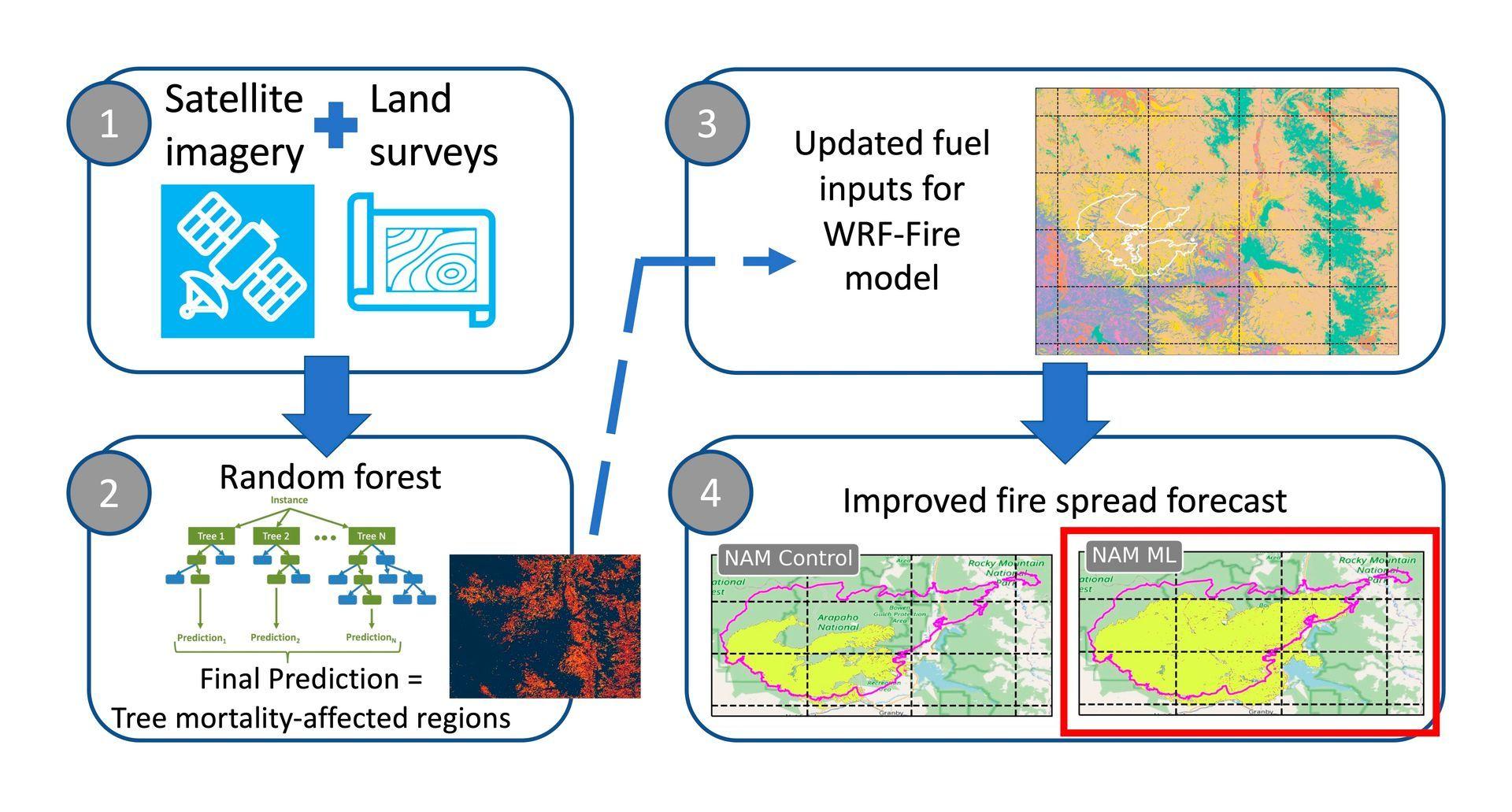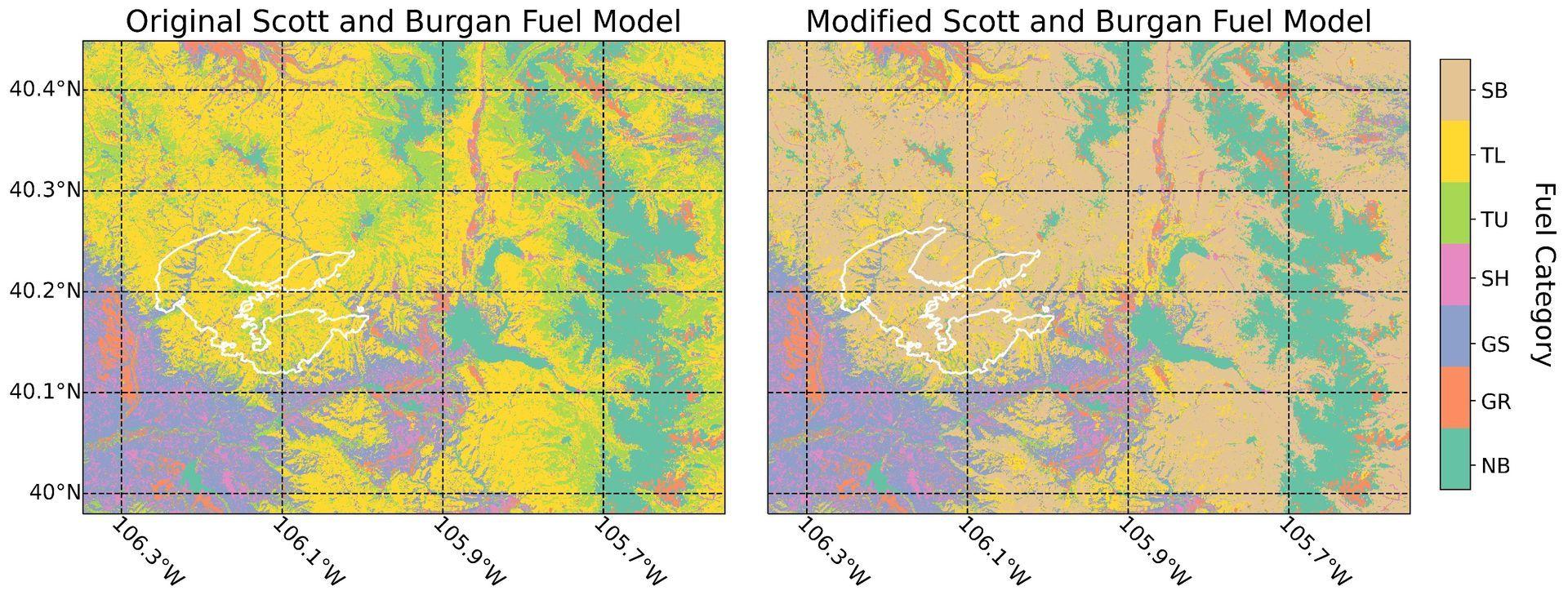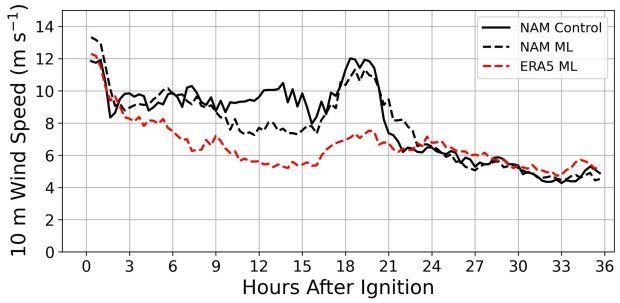A new method that employs artificial intelligence (AI) and machine learning (ML) to enhance wildfire forecasts has been developed by scientists at the National Center for Atmospheric Research (NCAR). The approach aids in the timely updating of vegetation maps, which are utilized by fire computer modeling algorithms to predict spreading behavior.
How can the ML model improve wildfire forecasts?
The technique was used to explain the 2020 East Troublesome Fire in Colorado. In fuel inventories, burned land was mischaracterized as being healthy, even though it had just been impacted by pine beetles and windstorms, leaving large swaths of dead and downed timber. Wildfires are not the only natural disaster scientists are dealing with. Did you know that the latest ML systems could detect deadly earthquakes swiftly?
The study compared two fire behavior models that used the standard fuel inventory and one that incorporated AI. When predicting the area scorched by the fire, the AI simulations outperformed those based on a normal fuel inventory significantly.

“One of our main challenges in wildfire modeling has been to get accurate input, including fuel data. In this study, we show that the combined use of machine learning and satellite imagery provides a viable solution,” said the lead author of the study, Amy DeCastro.
The Cheyenne system at the NCAR-Wyoming Supercomputing Center was used to conduct the model simulations. Models for simulating fires require a wealth of precise data on present conditions, such as local weather and terrain and plant material. The instruments provided by technology are being utilized to make these studies easier. For instance, a new neural network is able to read tree heights using satellite images.
The most comprehensive fuel data set is available from LANDFIRE, a government initiative that collects geographic data sets with information on wildfire fuels. Experts need a lot of satellite images, landscape modeling, and survey information to create wildfire fuel datasets. Because of the large quantity of essential data, updating the databases takes a long time. At the same time, the number of combustible materials in an area can differentiate rapidly.

The team used the Sentinal satellites, part of the European Space Agency’s Copernicus program, to update the fuel data. Sentinel-1 gathers data on surface texture and may be used to determine plant species. Sentinel-2 collects data that can be utilized to assess a plant’s health from its greenness. This data was used to build a machine learning model for the Forest Service’s Insect and Disease Detection Survey, which is done every year from the air to estimate tree mortality. The survey is run by the Forest Service.
The machine learning model could then precisely update the LANDFIRE fuel data with these new features.
“The LANDFIRE data is super valuable and provides a reliable platform to build on. Artificial intelligence proved to be an effective tool for updating the data in a less resource-intensive manner,” explained DeCastro.
Testing process
Next, the researchers wanted to see how the modified inventory would influence wildfire forecast simulations, so they utilized WRF-Fire, which NCAR built to simulate wildfire behavior.
The East Troublesome Fire was simulated using the unadjusted LANDFIRE fuel data by applying WRF-Fire to it, resulting in an underestimate of burned area. When the ML model was run with the updated wildfire forecast dataset, on the other hand, it predicted this burned area with far more precision. It assumed that dead and down timber would aid in fire spread.

The goal of this machine-learning approach is to modify current fuel maps at the moment, but it may eventually lead to the continuous production and updating of fuel maps.
Researchers at NCAR are also optimistic that machine learning will help us solve even larger issues in this area, such as how to improve our ability to forecast the characteristics of embers produced by a fire.
“We have so much technology and so much computing power and so many resources at our fingertips to solve these issues and keep people safe. We’re well-positioned to make a positive impact; we need to keep working on it,” said the study’s co-author, Timothy Juliano.
When discussing environmental issues, it is important to stress sustainability concerns. Check out the latest study dealing with the increasing power needs of ML.






